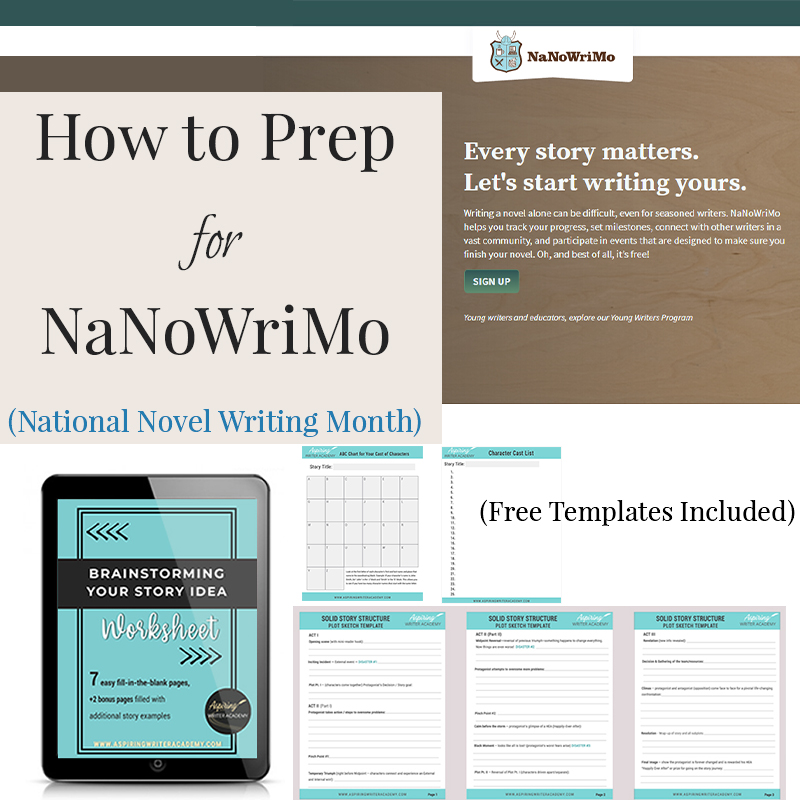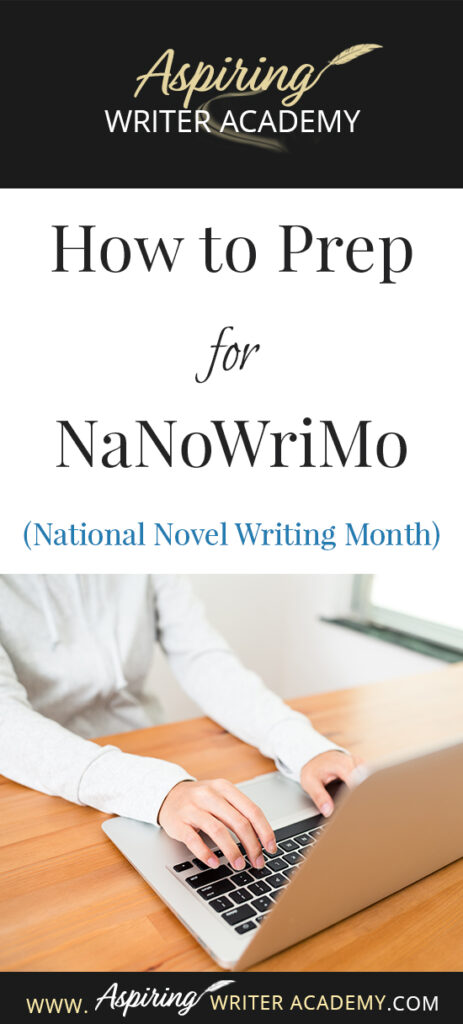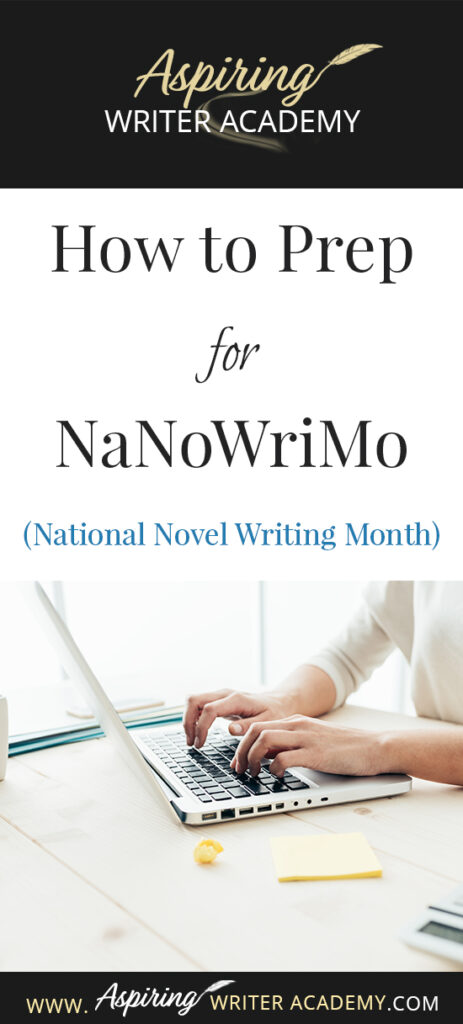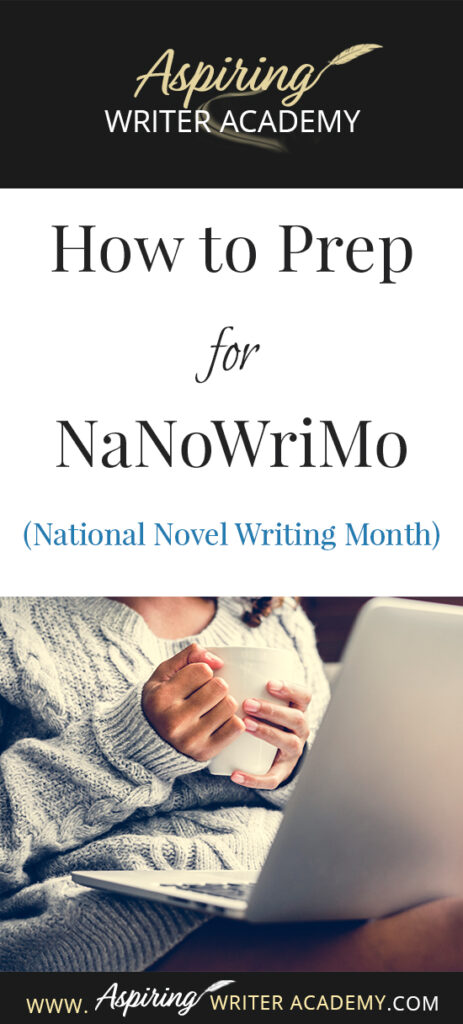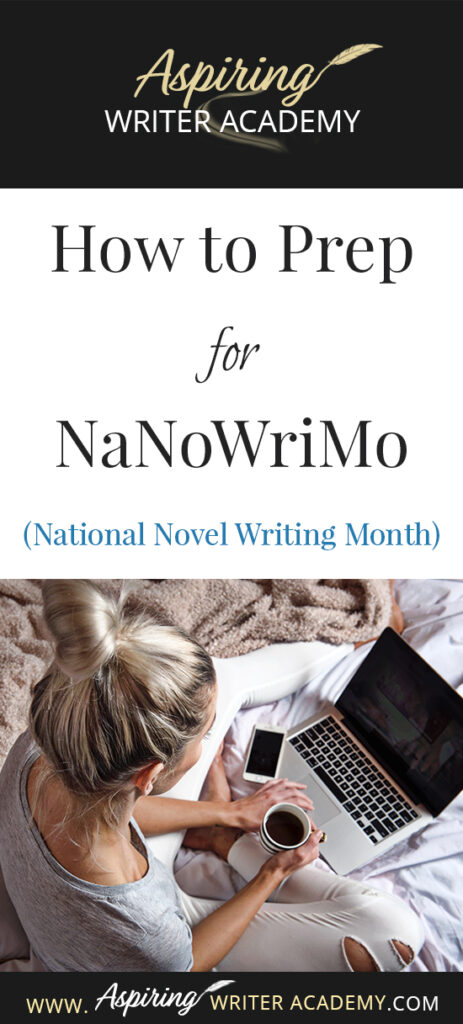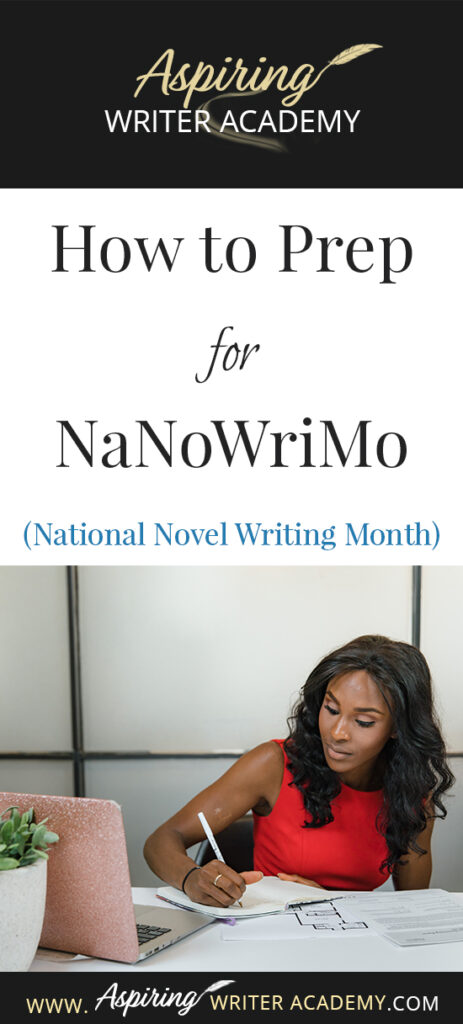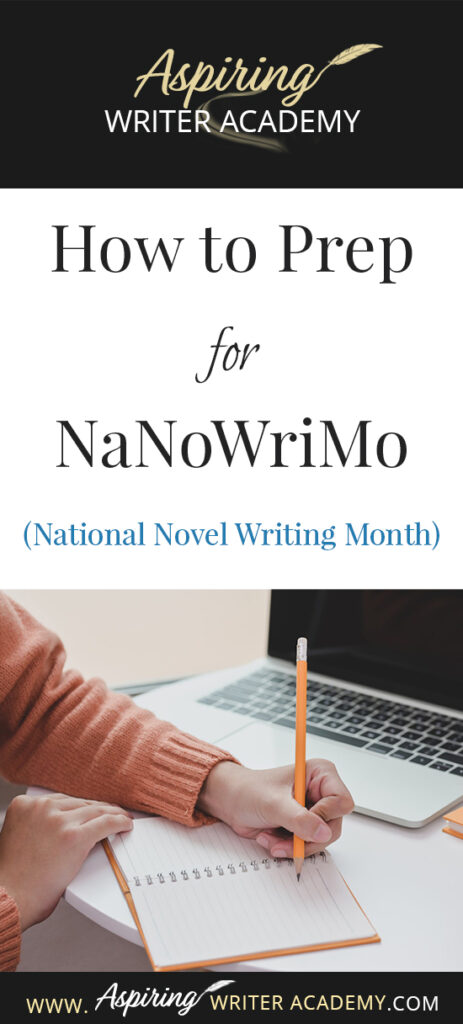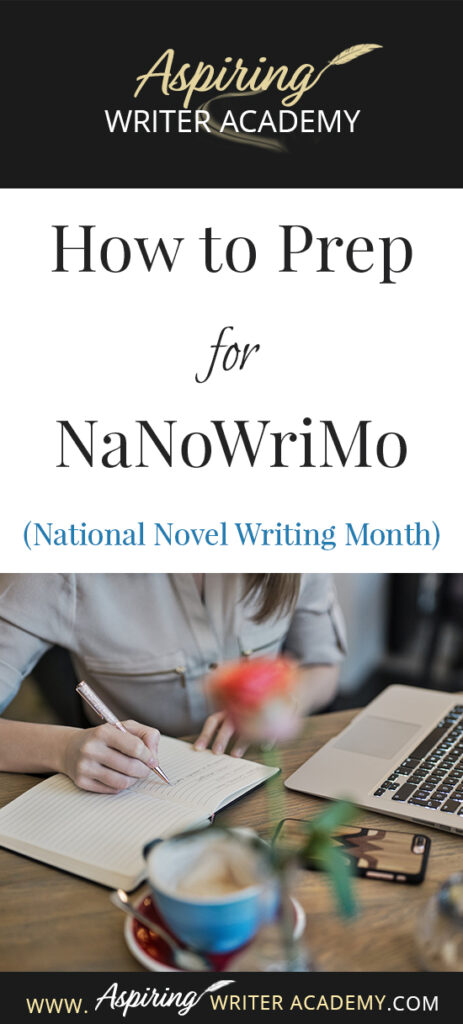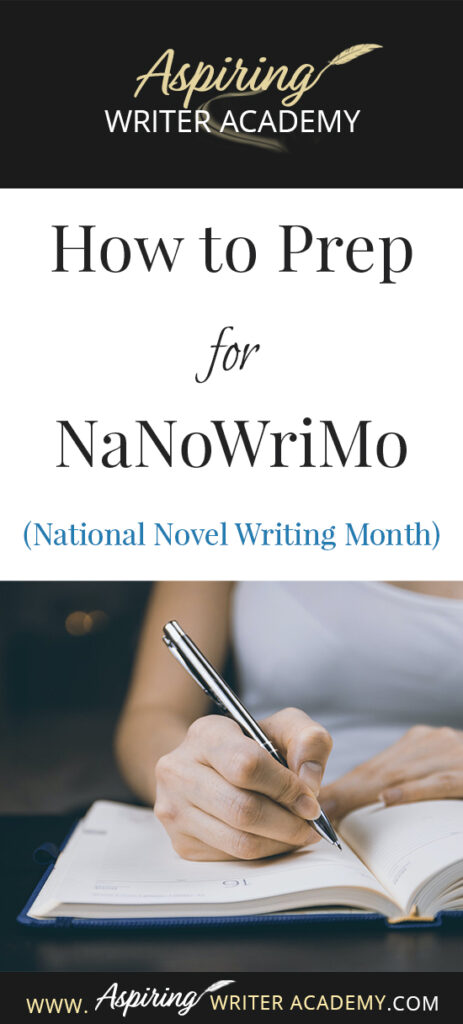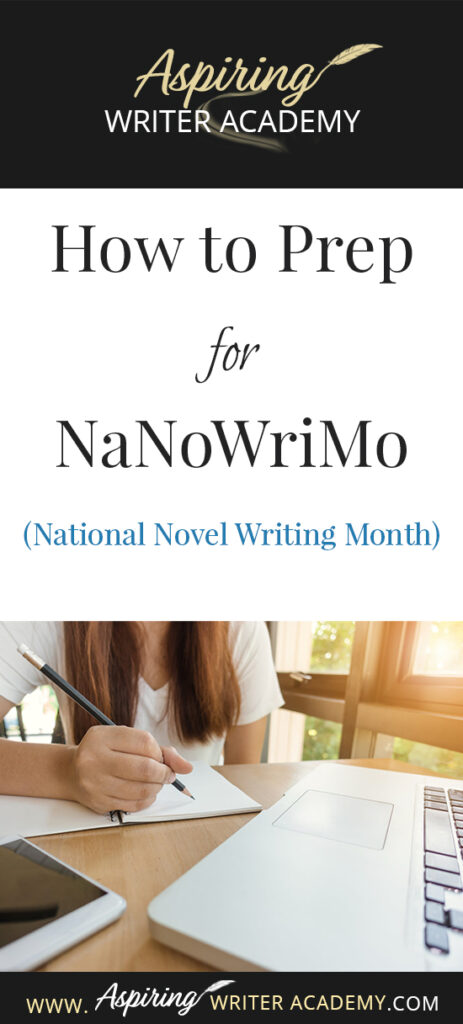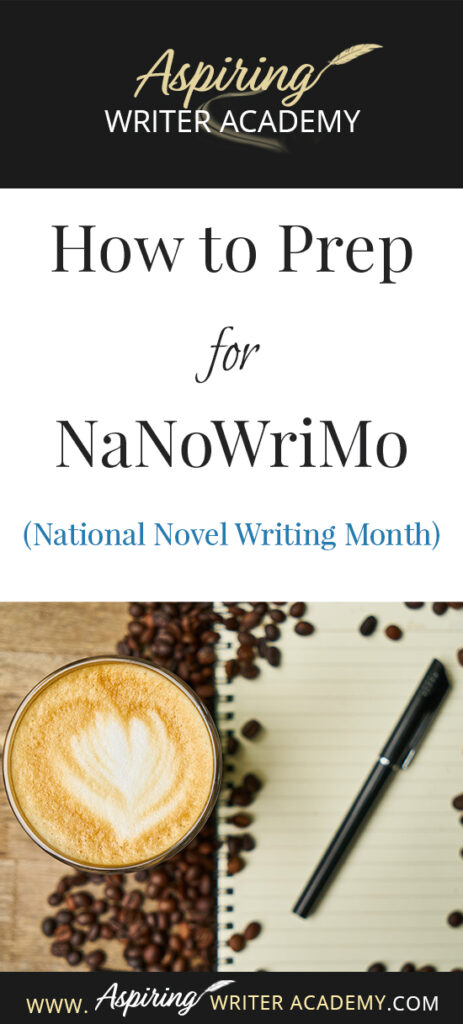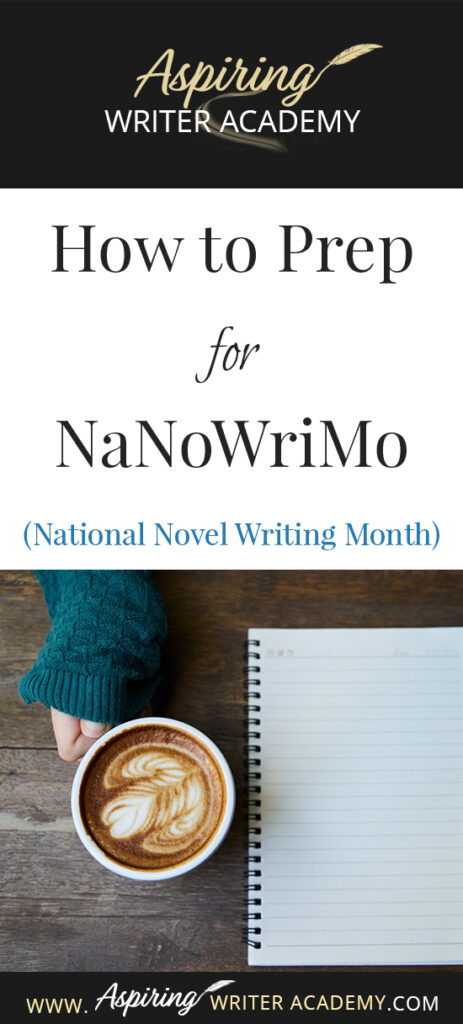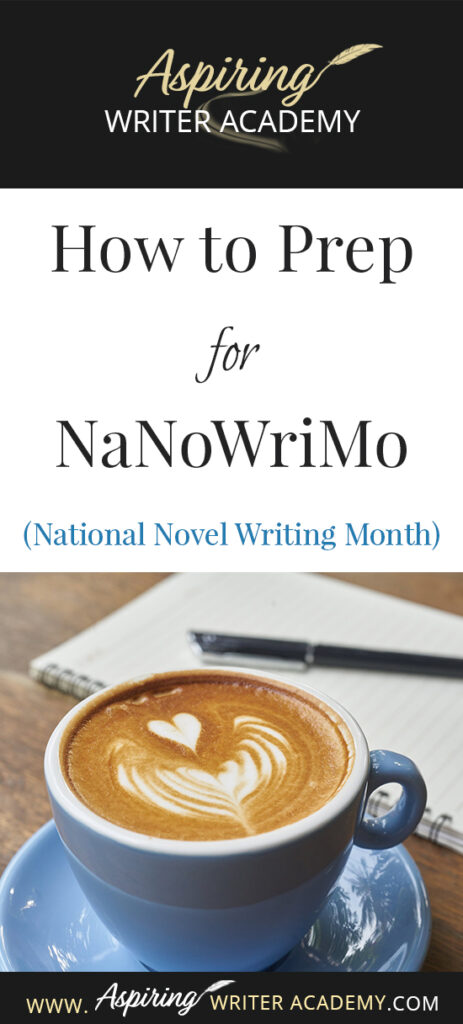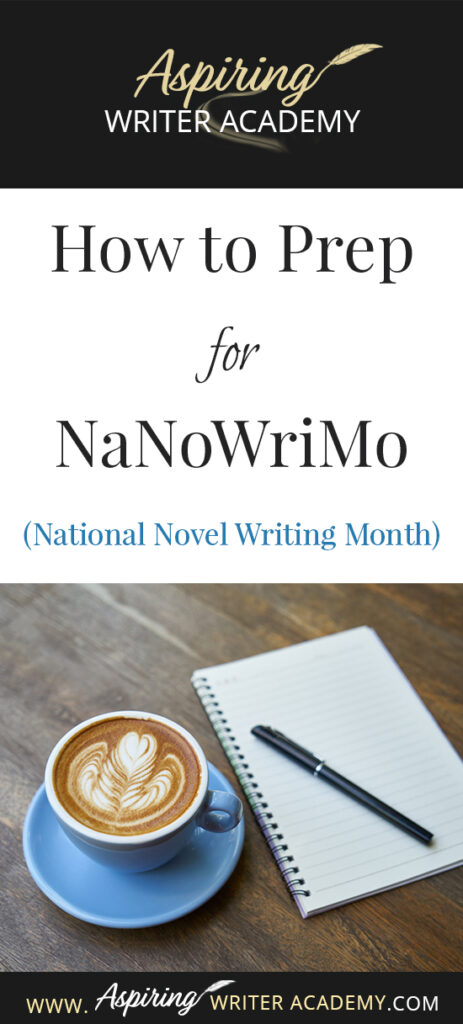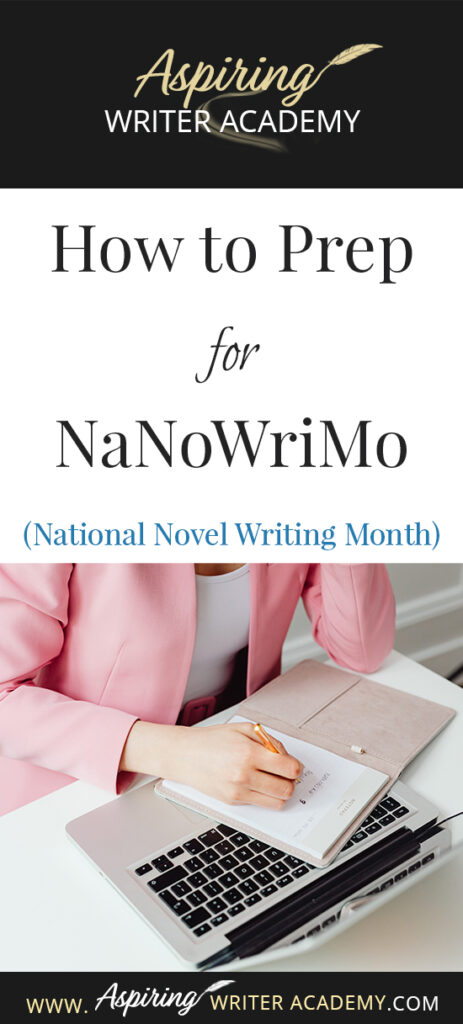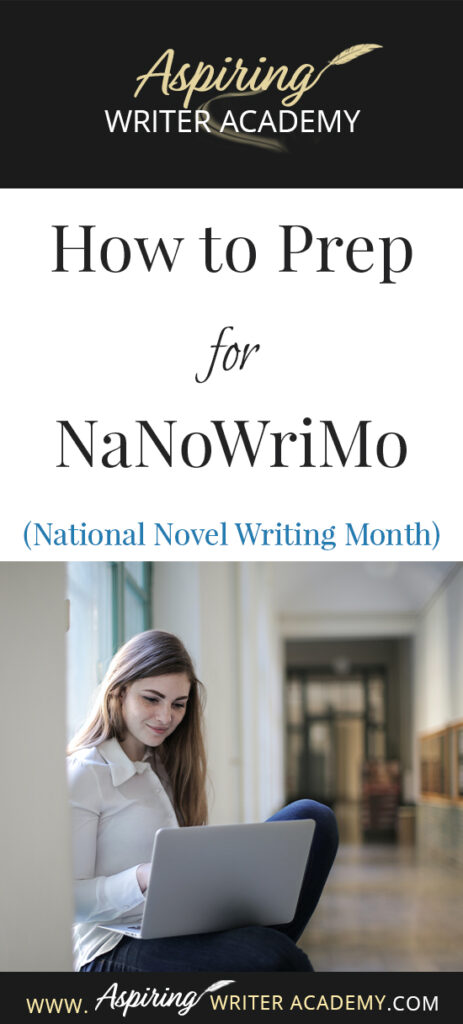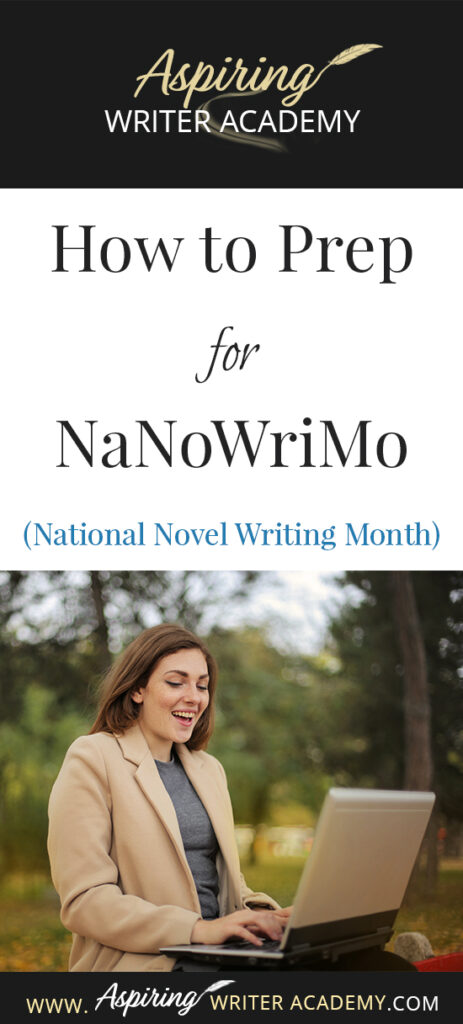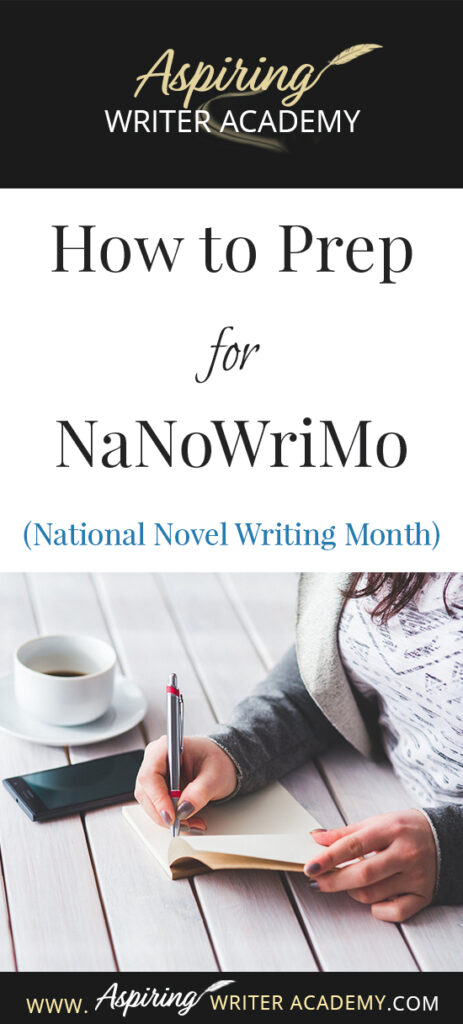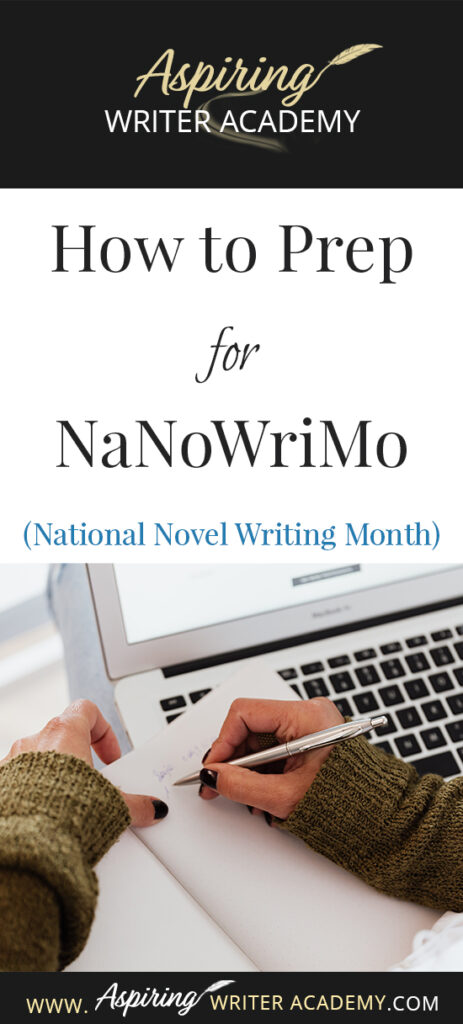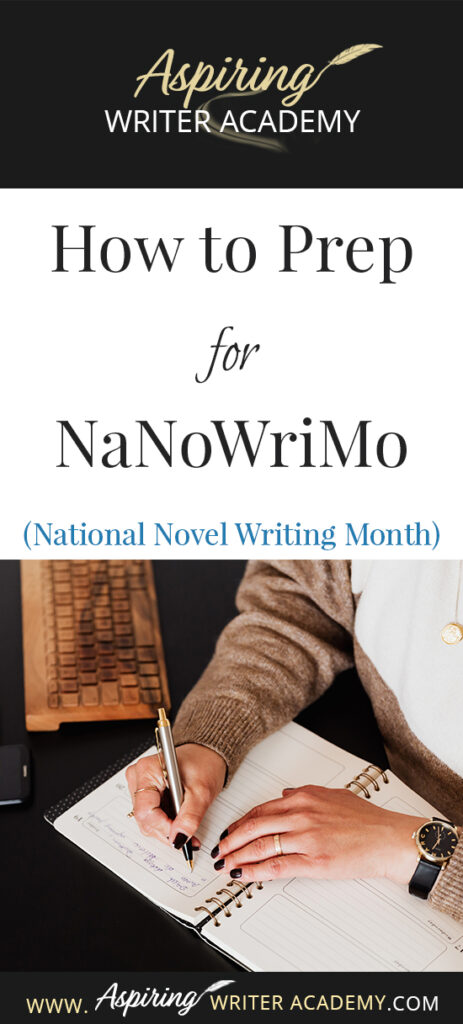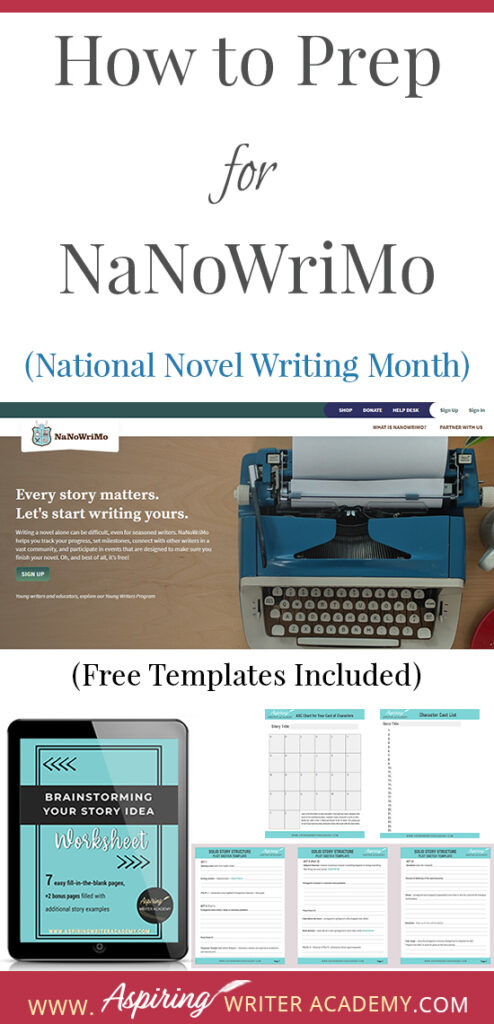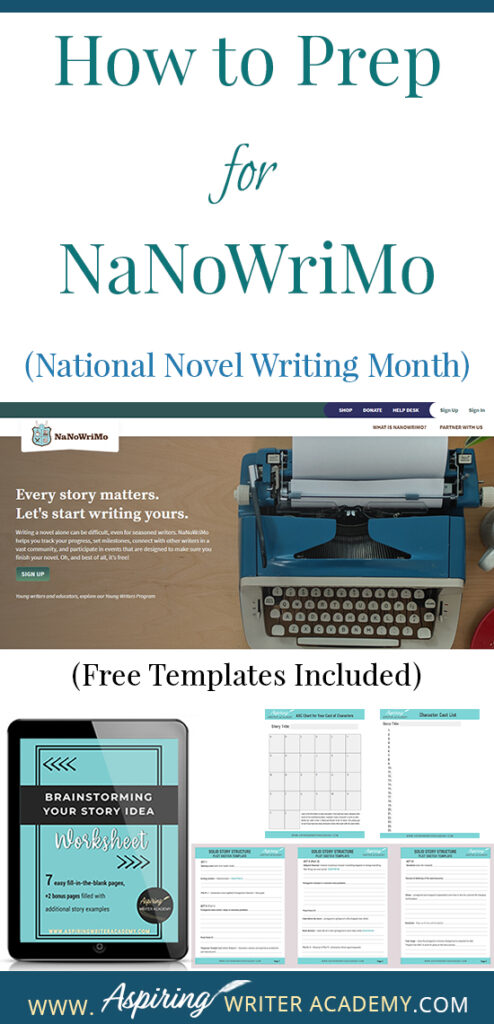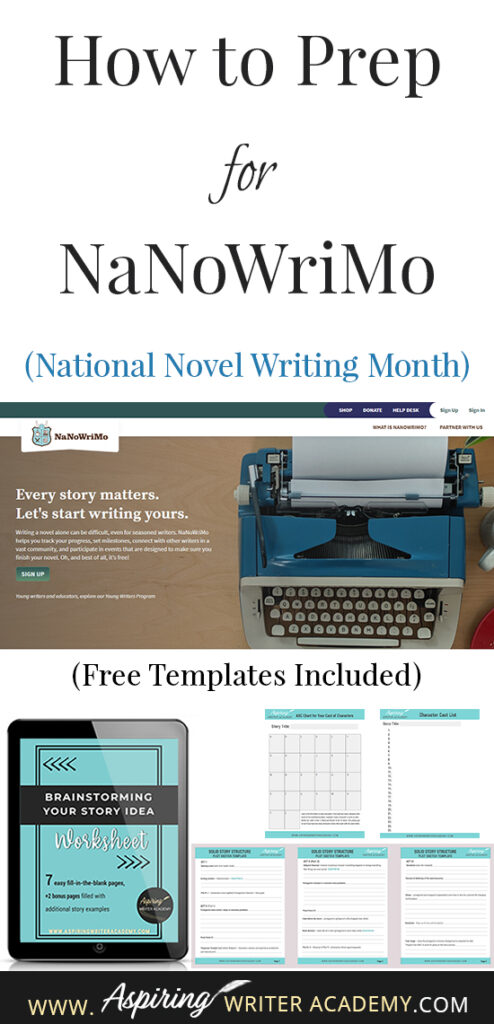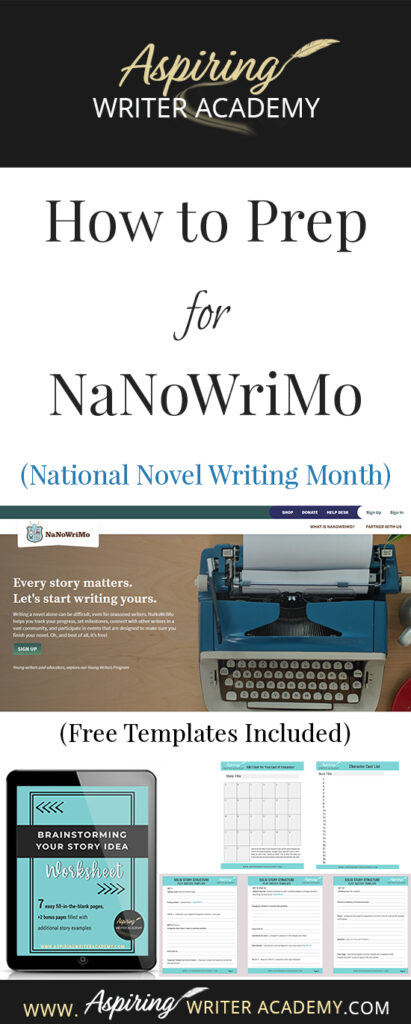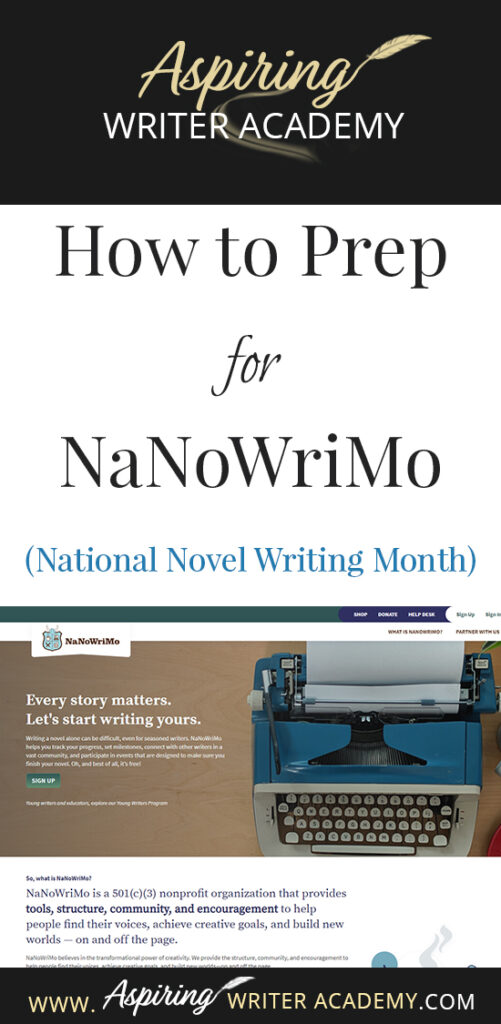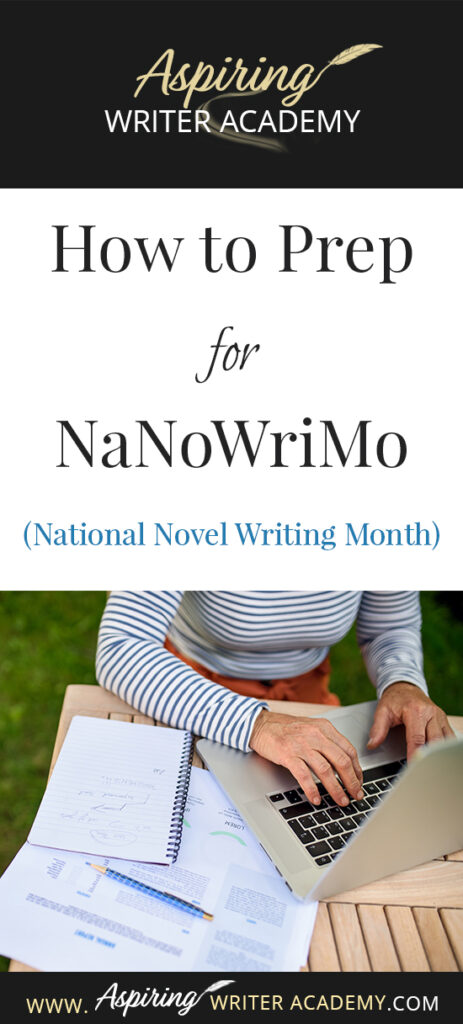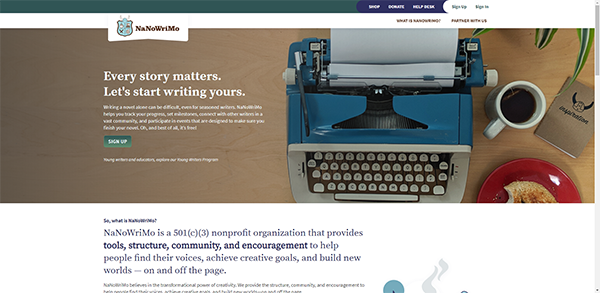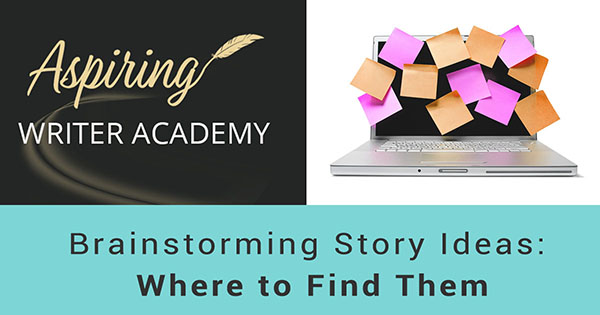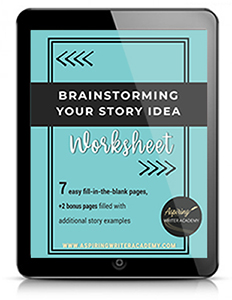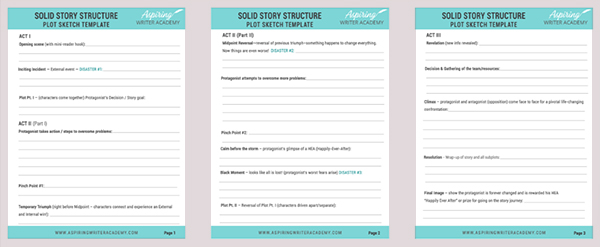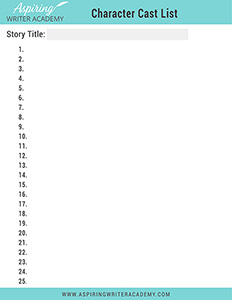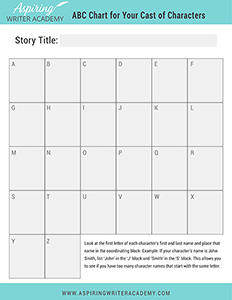How to Prep for NaNoWriMo (National Novel Writing Month)
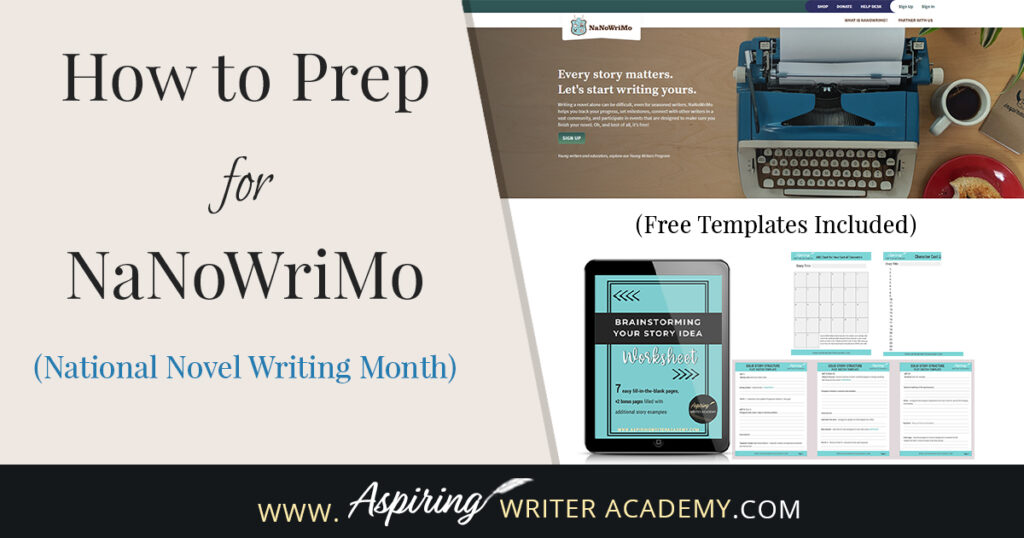
During the month of November, thousands of writers will attempt to write a 50,000-word novel in 30 days. But what exactly is NaNoWriMo and where can you sign up? Can someone really write a novel in 30 days? How can an aspiring writer prepare for such an endeavor both personally and professionally?
In our post, How to Prep for NaNoWriMo (National Novel Writing Month), we discuss the basics of the free challenge as well as helpful tips to make your new writing project a success.
In the post below we will discuss:
- NaNoWriMo Basics
- How to Track Wordcount
- Personal Prep Tips
- Professional Prep Tips
- Helpful Story Templates
1) NaNoWriMo Basics
What is NaNoWriMo?
“NaNoWriMo is a 501 (c)(3) nonprofit organization that provides tools, structure, community, and encouragement to help people find their voices, achieve creative goals, and build new worlds – on and off the page.”
In addition to the National Novel Writing Month challenge in November, with participants around the world ages 13 and older, NaNoWriMo also supports Camp NaNoWriMo in the months of April and July and Young Writer’s Programs for those 17 and under.
You can find out more information, sign up for NaNoWriMo, name your writing project for the month of November, join the online community, and invite friends to do the challenge with you (all for free!) at:
First let’s discuss the biggest issue on everyone’s mind:
Is it possible to write a 50,000-word novel in 30 days?
Yes! Although the total number of words may sound intimidating, 50,000 words can be broken down into a manageable goal of 1,666 words or 6 ½ pages a day (assuming there are 250 words per page.)
The key is to write fast, as you push yourself beyond limits you didn’t even know you had to maintain your daily or weekly quota. Writing fast keeps you focused on the storyline. You don’t need perfection, just words on the page. Suddenly, you start to see connections you hadn’t even planned. The adrenaline starts pumping as you move closer to the finish line.
Writers of all levels of experience participate in NaNoWriMo every year and the winners who achieve their goal can download certificates, win prizes, and purchase all kinds of ‘winner’ merchandise from the NaNoWriMo shop to celebrate their success.
But what if you run out of ideas?
In my experience, I have found it helpful to do some ‘prep work’ beforehand. If you go into the challenge with a story idea in mind, perhaps a few characters already springing to life in your head, you will feel more confident to write a novel with a believable beginning, middle, and end.
How good will a fast-written story be?
The main goal of the challenge is to encourage aspiring writers to make a commitment, write toward a deadline, build community with other writers, and FINISH a completed project.
There is so much joy and satisfaction in the act of completion!
After that euphoric moment when you type ‘The End,’ you will proudly be able to stand tall and announce that you put in your all, you persevered, and you wrote and finished a book!
It may be a rough draft that will need several months of revisions to bring the quality up to publishing standards, but hey, all novels need revision.
2) How to Track Word Count
The NaNoWriMo website gives you a private page where you can give your novel a title, a story summary, and keep track of your wordcount.
It’s so easy! Each day, just log on to your private stats page and update how many words were written.
The commuter calculated graphs and statistics on how far you’ve come and the estimates of how many words are still needed are inspiring! It even tells you what day you should finish if you continue to write at your current pace.
And what I love best is that this free feature is available for you to use year-round! That’s right! All you need to do is log in to the NaNoWriMo website and you can use this free word count tracking tool for any of your writing projects any time!
3) Personal Prep Tips
To make the journey easier on you and your family, you might want to consider the following tips to allow you more time and freedom to write:
- Plan a meal schedule for the month of November. Prepare, cook, or buy as many meals as possible ahead of time and put them in the freezer. Then at dinner time, all you have to do is take it out and put it in the oven.
- You might also want to load up your refrigerator or pantry with quick, easy, lunches or snacks for you to eat while writing.
- If you live in the United States, don’t forget about the Thanksgiving holiday. Can someone else host dinner and cook for you this year?
- Explain to your family what you are doing and how important this NaNoWriMo challenge is to you. It is only for one month. 30 days. Try to get them on board to help you as much as possible. Perhaps offer them a fun reward (a special treat or outing?) at the end of the month or consider paying them for their time. Can your husband bring home pizza or take out food once a week? Can your kids help clean the house or run errands? Can a neighbor pick up the kids from soccer practice or music lessons?
- Try setting the alarm clock an hour earlier or go to bed an hour later to allow you more time to write. Often these hours are extremely beneficial because the family is in bed and the phone is silent, giving you peaceful time to concentrate on your manuscript.
- Deep clean the house before November 1st and take care of any time-consuming personal matters ahead of time. Do not schedule any vacations or appointments in November unless absolutely necessary.
- Say NO to any other commitments. If you belong to multiple social groups, see if you can take a break for just one month so you can get your novel done. If you lead any of these groups, see if someone else can stand in for you for just 4 weeks.
- Buy upcoming birthday, anniversary, and holiday cards and gifts before the month of November and have them wrapped and ready to go!
- Schedule a designated hour in the day or week that you will return phone calls and emails.
- For 30 days, severely limit your time on social media! Also limit TV time!
4) Professional Prep Tips
Unless you are extremely prolific, it is hard for most people to brainstorm and plot out a story, create characters, research settings, and write 1,666 words day after day without falling into utter exhaustion or giving up.
To set yourself up for success, it helps if you have a plan. Think about what kind of story you would like to write beforehand and consider the following tips:
- Find a story idea to work with. Ideas are everywhere – in real life conversations, in newspaper and magazine articles, in online headlines, photos, or on TV. Keep asking – “What if?” What if a character did this? What if this happened? What if a character found himself in this situation?
How? Why? What? Where? When? Dig for answers. You might also want to check out the blog below:
https://www.aspiringwriteracademy.com/brainstorming-story-ideas-where-to-find-them/
- Choose a setting and do a little research before the challenge begins. Where does your story take place? What is unique about this setting? How can this setting either help or hinder your main character? For more help on settings, you might want to see:
https://www.aspiringwriteracademy.com/how-to-research-a-setting-for-your-fictional-novel/
- Create a cast of characters to go with your story idea. Who would be the best main character for this type of story? Who will oppose this character and try to stop him from achieving his goal? Who will help your main character? The most important thing to figure out is – what does your character want? What will be his story-worthy goal? For more information on creating character’s see the post below:
https://www.aspiringwriteracademy.com/10-questions-to-ask-when-creating-characters-for-your-story/
- Map out your story idea on a poster board with sticky notes or line up index cards on a table. Move pieces around until you are satisfied with the working order. Will this story idea make sense? Does it give you a clear beginning, middle, and end? The blog below will help you map out a working outline:
https://www.aspiringwriteracademy.com/basic-story-structure-how-to-plot-in-6-steps/
5) Helpful Story Templates
We’ve created a series of free fill-in-the-blank templates to help you create characters and formulate a solid working story idea to give you your best chance of success during NaNoWriMo in November.
- Brainstorming Your Story Idea Worksheet
I hope you have enjoyed, How to Prep for NaNoWriMo (National Novel Writing Month), and learned some valuable tips to enable you to have an enjoyable experience if you decide to take on the challenge to write a book in 30 days.
If you would like additional help, you may want to download our Free Brainstorming Your Story Idea Worksheet.
Do you find it difficult to create compelling antagonists and villains for your stories? Do your villains feel cartoonish and unbelievable? Do they lack motivation or a specific game plan? Discover the secrets to crafting villains that will stick with your readers long after they finish your story, with our How to Create Antagonists & Villains Workbook.
This 32-page instructional workbook is packed with valuable fill-in-the-blank templates and practical advice to help you create memorable and effective antagonists and villains. Whether you're a seasoned writer or just starting out, this workbook will take your writing to the next level.
If you have any questions or would like to leave a comment below, we would love to hear from you!
Our Goal for Aspiring Writer Academy is to help people learn how to write quality fiction, teach them to publish and promote their work, and to give them the necessary tools to pursue a writing career.

ENTER YOUR EMAIL BELOW
TO GET YOUR FREE
"Brainstorming Your Story Idea Worksheet"
7 easy fill-in-the-blank pages,
+ 2 bonus pages filled with additional story examples.
A valuable tool to develop story plots again and again.
Other Blog Posts You May Like
What Authors Need to Know About ISBN Numbers Before Self-Publishing
Fiction Writing: How to Find a Critique Partner/Group
How to Research Information for a Historical Novel
7 Steps to Begin Writing a New Fictional Story
Learn to Plot Fiction Writing Series: Story Analysis of the movie “Signs”
Fiction Writing: How to Get a Literary Agent
How Writing Prompts Can Improve Your Fictional Story
Creative Writing: 5 Ways to Strengthen a Weak Fictional Character
Fiction Writing: Create a Storyboard to Map Out Your Scenes
Fiction Writing: How Specific Details Can Bring Your Setting to Life
How to Spot Publishing Scams & How To Avoid Them
5 Common Mistakes New Writers Make
Fiction Writing: Story Analysis of the movie “Passengers”
Fiction Writing: How to Write Compelling Dialogue
Fiction Writing: 5 Key Differences Between a Novel and a Novella
Pros & Cons of Traditional vs. Self-Publishing Fiction
3 Ways to Avoid Writing ‘Episodic’ Scenes in Fiction
Fiction Writing: Office Supplies to Help You Prepare to Write Your Next Novel
Scene & Sequel: The Secret to Plotting an Epic Novel
Scene & Sequel: The Secret to Plotting an Epic Novel (Part 2)

is a multi-published author, speaker, and writing coach. She writes sweet contemporary, inspirational, and historical romance and loves teaching aspiring writers how to write quality fiction. Read her inspiring story of how she published her first book and launched a successful writing career.

